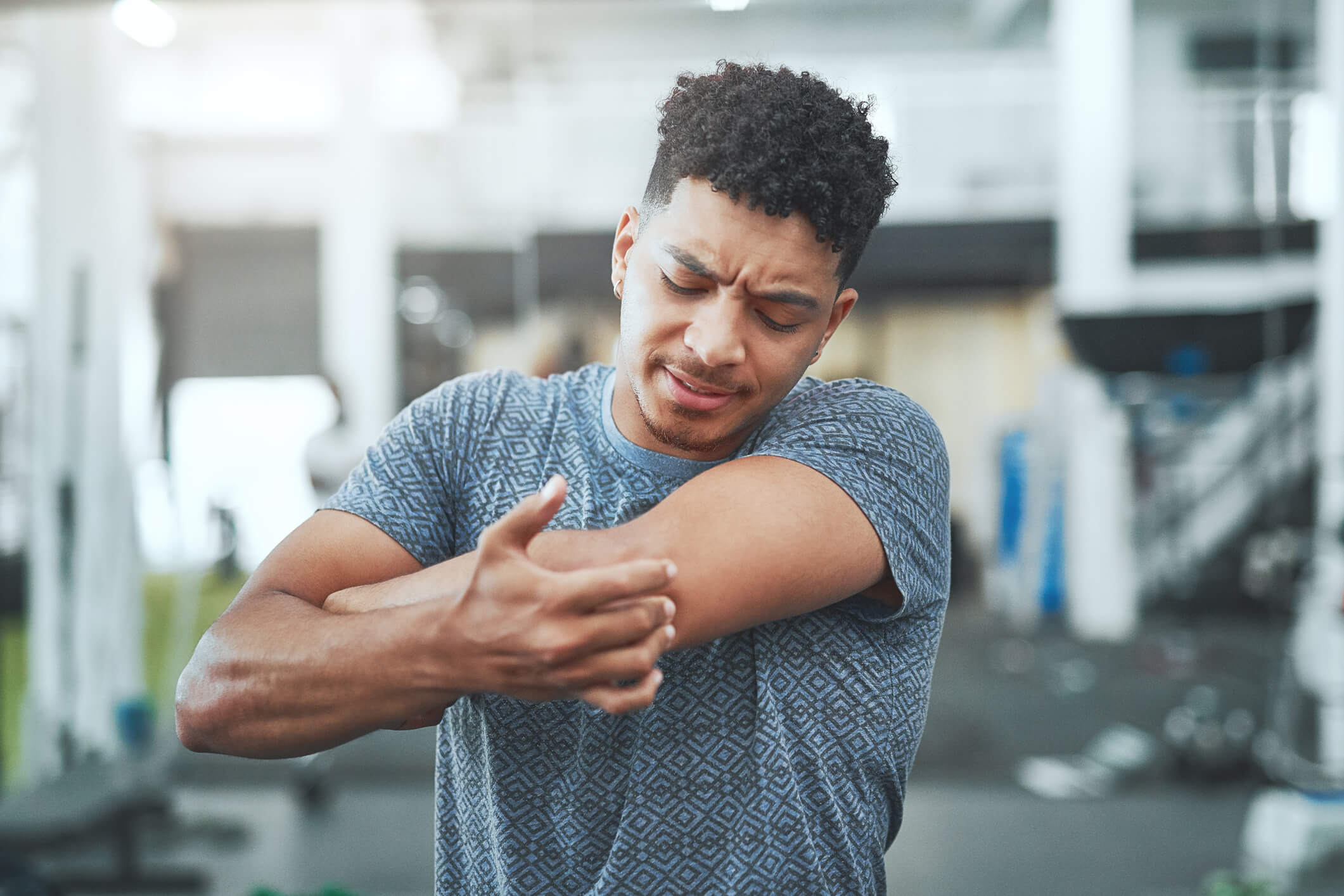Why do I have elbow pain when lifting things at work or around the house?

Elbow pain is a common condition affecting a person’s ability to use their elbow to perform daily tasks comfortably. Elbow pain can cause discomfort when lifting things around the house, like water glasses, clothes, and even children. It’s commonly associated with sports injuries. One study found that elbow pain affects 20% to 50% of all tennis players. But it is just as likely to occur in laborers and child care workers. If you’re one of the many who have developed elbow pain that limits your ability to perform daily activities, here are some of the top causes you should know about and how physical therapy can address them.
What are some of the top causes of elbow pain when lifting things?
There are many reasons why someone might experience elbow pain when performing various tasks, such as lifting things around the house. These include:
- Tennis elbow — Lateral epicondylitis, also referred to as tennis elbow, is a condition where the tendons that connect muscle to the elbow tear or become inflamed. This inflammation is usually the result of overuse. Although it’s a common injury among tennis players — hence the name — anyone who performs repetitive movements involving their elbows can be susceptible to tennis elbow, and can experience pain when picking up objects.
- Stress fracture — A stress fracture is a condition that involves small cracks, also known as fractures, in the bone. Stress fractures can occur in the elbow if it’s used to perform the same movements over and over. It can also result from putting pressure on the same area of bone too often. Stress fractures in the elbow can lead to pain and difficulty when lifting objects.
- Muscle strain — Muscle strain is another cause of pain in the elbow while lifting items. This type of injury most often occurs from repetitive overuse, poor muscle strength, hyperextension or injury. Muscle strain can make lifting even seemingly light objects, like cups, shoes and books, difficult. Muscle strain in the elbow can make carrying small children painful or challenging.
- Dislocated elbow — A dislocated elbow is a condition that’s characterized by pain when lifting, elbow instability, physical deformity around the elbow, limited mobility, and swelling. When the elbow becomes dislocated, the joint is knocked out of its socket. Dislocations typically occur from traumatic injuries, like those caused by car accidents, sports impacts or falls.
- Bursitis — Bursitis involves the inflammation of the bursae in between the muscles, bones and tendons. It usually occurs in the shoulders and hips and has been known to occur in the elbow. The bursae typically become inflamed from traumatic impact or overuse. Someone with bursitis will likely have pain when lifting objects, sensitivity around the elbow, and swelling.
Can physical therapy improve elbow pain that occurs when lifting things?
Yes, physical therapy can improve your elbow pain that occurs when you lift objects. A physical therapist can use exercise and several techniques to reduce inflammation and pain in your elbow gradually. Here’s what else physical therapy can do for people with elbow conditions:
- Reduce swelling — A major benefit of physical therapy is that it can reduce the amount of swelling that occurs around the elbow joint. Most of the conditions mentioned above lead to swelling and inflammation around the elbow, but PT can use exercise to boost inflammation and limit swelling.
- Increase muscle strength — Another benefit of physical therapy for elbow pain is that it can effectively increase the surrounding muscles’ load-bearing capacity. Muscle weakness can lead to strains and leave areas of the elbow vulnerable to injury. Working out the muscles in the arm and around the shoulder can protect the elbow. It can also relieve muscle tension that may increase your risk of injury.
- Improve range of motion — Physical therapy can improve the range of motion in your elbow so that lifting objects can be performed with greater ease. Swelling and pain can cause a limited range of motion in the elbow, but these are symptoms that a physical therapist can address. Intentional exercise of the elbow can increase flexibility and promote blood flow to the elbow to encourage faster healing and reduce inflammation.
Let Franklin Rehabilitation treat your elbow pain
Life with elbow pain doesn’t need to cause you any more inconveniences than it already has. Care from the right physical therapy clinic is key to regaining control over your life after developing elbow pain that prevents you from performing various daily activities. Consider making an appointment request today for a free screening with one of our experts. At Franklin Rehabilitation, our physical therapists are uniquely qualified to treat your elbow pain. We can help you take steps in the right direction. Don’t wait any longer to reach out to us for the treatment you need.
Contact our team today for more information or to schedule an initial appointment.
